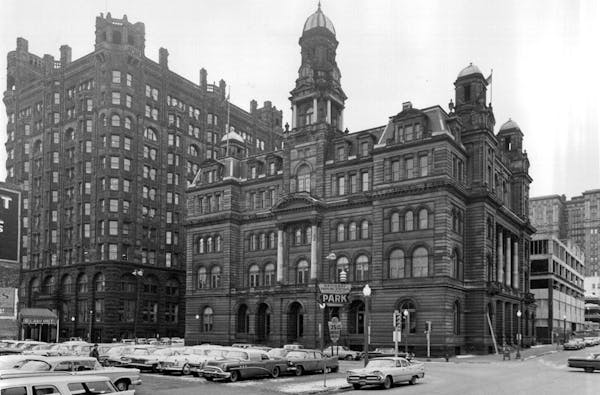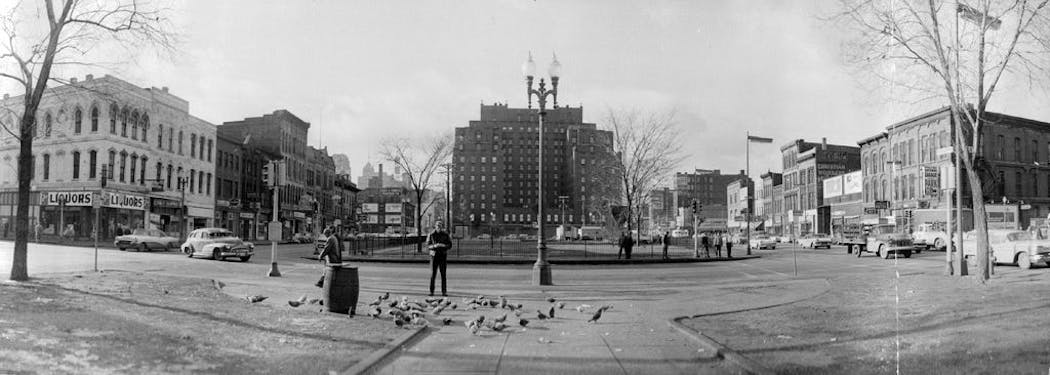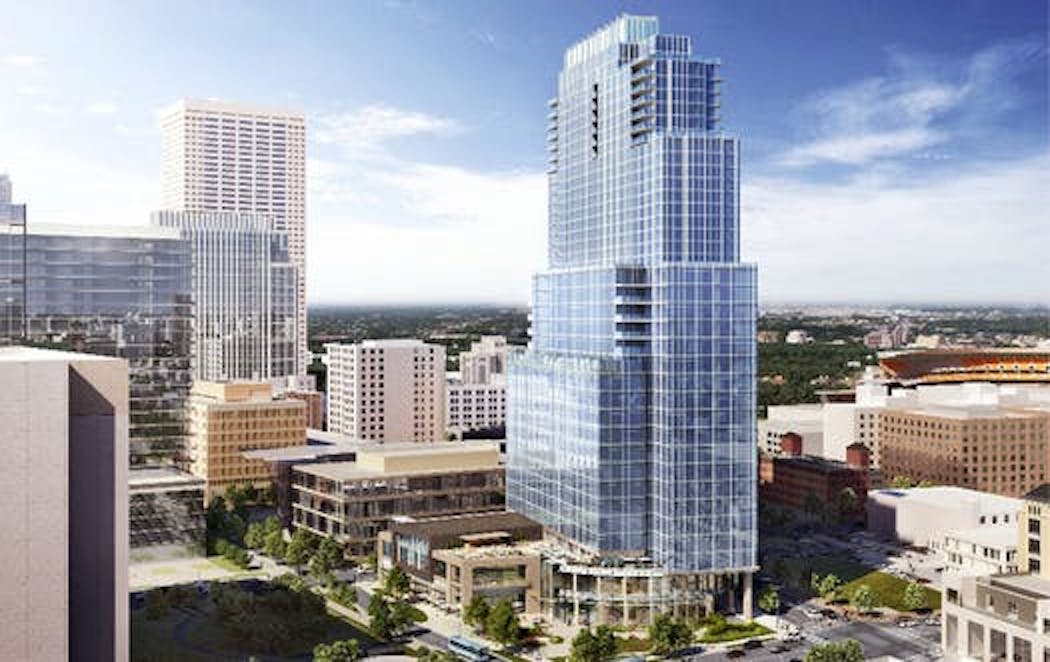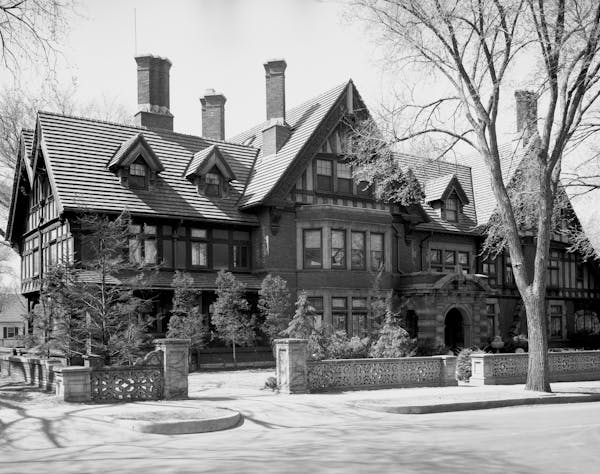Quite a few people probably looked at the design for the new building on Nicollet Avenue and thought: That's enormous. And boring. But it's better than what's there now.
That was in 1923, when plans for the Nicollet Hotel were announced. Now we look back on that 12-story behemoth of a hotel with fondness, if we remember it at all. (It has been gone for almost 30 years.)
The Nicollet was just one of a handful of towering hotels, like the Andrews, the Dyckman, the Radisson, the Curtis, the Leamington. Serious stone citizens from an era before glass replaced brick.
As style goes, the Nicollet was utterly ordinary. Standard-issue 1920s hotel architecture had two floors of stone on the bottom, a stone cornice above, and however many floors you wanted in between. Four? Forty? The style could be stretched to accommodate whatever the investors wanted.
The Nicollet, however, was different from its brethren because of its location: on Washington Avenue, bounded by the historic streets of Hennepin and Nicollet, by Gateway Park.
It's the edge of downtown now, but it once was the center of a growing city. And nothing proved Minneapolis' prosperity and confidence more than the Nicollet Hotel.
The new Nicollet Hotel, I mean. Because there had been another. The Nicollet Hotel was preceded by the Nicollet House, later called the Nicollet Hotel.
The first one opened on May 26, 1858 — the year of statehood. Over the years the famous Room 204 in the four-story hotel was home to countless notables, including Presidents Grover Cleveland, William McKinley and Teddy Roosevelt. (Not all at once, of course.) There are no plaques to note the august Americans who walked on the same ground where cars now park.
Its replacement, designed by Holabird & Roche, opened in 1924. One newspaper of the time, not particularly concerned with objectivity, called it a "Tribute to City Energy, Vision" owned and built by "Public-Spirited Citizens," a "Triumph of Hotel Design" and a "Monument to Civic Spirit of Minneapolis."
It boasted 637 rooms, with rates starting at $2 a night, plus a barbershop with 16 barbers and a ladies bobbing department, if you wanted a short 'do. It also had a concert orchestra of its very own.
In addition, it had something unique: public participation in the financing. The citizens bought stock. More than $1 million in preferred stock was offered to the public and was sold in less than a week.
Paying homage
Both of the Nicollet Hotels faced Gateway Park, a green space created by the demolition of the old City Hall in 1914. In 1915 a stately classical pavilion was erected on the site. It had a fountain and a motto: "More than its arms, the City opens its heart to you."
It was the height of civilization, until it wasn't.
Gateway Park and the area around it eventually went to seed. By the 1950s, the buildings took on a careworn look. The bars were dingy booze holes. The Nicollet looked like a castle surrounded by a moat of sweat and rotgut.
All the downtown hotels were feeling their age. A few made attempts to modernize. The Leamington remodeled its upper floor and lobby; the Curtis added a motel. The Radisson covered up its ornate facade with stone. Eventually, most of them were demolished.
The Nicollet Hotel dodged the wrecking ball that took down most of the Gateway in the 1960s. Perhaps it seemed like too much work to wreck it. Perhaps there was just enough profit — and public sentiment — left to let it decline on its own.
By 1973 it was out of the hotel business, and was run by Soul's Harbor, a religious organization. The church went bankrupt in 1984. Everything — beds, chairs, sheets, ashtrays, dishes — was sold. The building where Glenn Miller once played and Harry Truman chatted was empty. It was clawed to rubble in 1991. It's been a parking lot for 28 years.
But it may not stay one. United Properties has proposed a 33-story glass office tower for the site.
The latest design for the building pays no homage to the hotel. The City Council debated whether to let the new tower have its tenant's name in lights on the top. After some debate about commercializing the skyline, it assented.
I'm guessing no one would complain if the old huge neon sign still blared out HOTEL NICOLLET as it once did.
If we'd been lucky, the Nicollet would have rehabbed it. If we'd been really lucky, the pavilion would be standing, and there'd still be a park.
But we're not lucky.
Perhaps there could be a plaque on the spot to recount the history of the block, the once-chic hotel, the dignitaries and swells who once stopped to dine, dance and slumber.
Just don't expect the new building's owners to do that on their own dime. Perhaps they could sell shares.
Olympian Kristi Yamaguchi is 'tickled pink' to inspire a Barbie doll

After 4 decades in music and major vocal surgery, Jon Bon Jovi is optimistic and still rocking
Rom-com author Emily Henry knows the secret to having a healthy relationship with love






